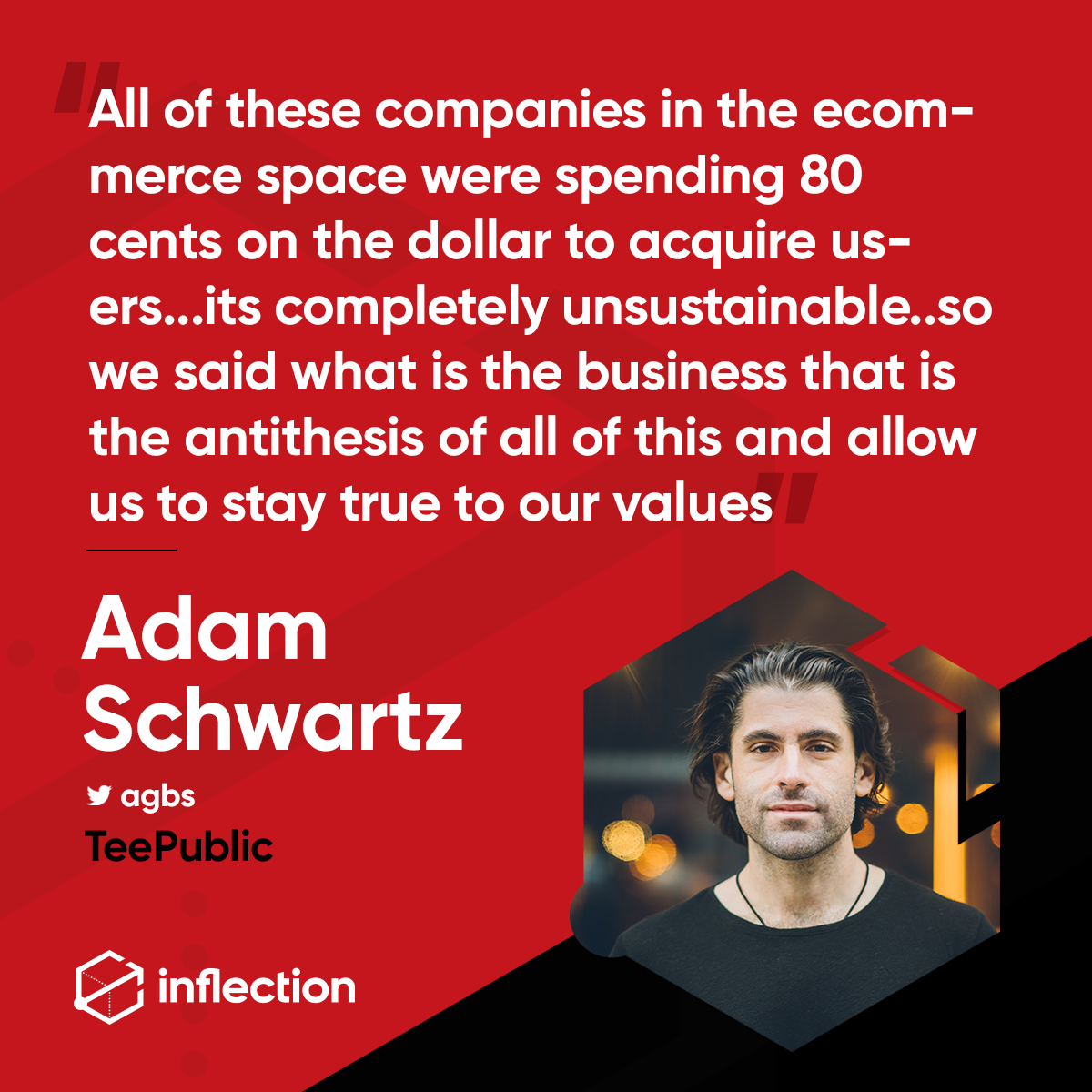How TeePublic Built A Profitable Business That Sold For $57 million
The Blueprint is a series were we pull out actionable tips for you to build your business. If there is a particular company you would like to suggest, you can suggest them here.
We sat down with Adam Schwartz, CEO of TeePublic, an e-commerce marketplace empowering independent artists for a fireside chat. We learned how they built a profitable business over 6 years, without venture funding, and recently sold to RedBubble for $57mm.
Here are the key Inflection points to the TeePublic journey:
Inflection Point 1: Intentionally Creating A Profitable Business
Inflection Point 2: Treating The First 1000 Customers With Care
Inflection Point 3: Building A Moat With SEO
Inflection Point 4: Fighting through roadblocks
Inflection Point 5: Staying Focused On Organic Growth
Inflection Point 6: Plan To Pivot
What Is TeePublic:
TeePublic is a marketplace for independent artists to create on demand e-commerce stores.
Inflection Point 1: Intentionally deciding to create a profitable business
Adam’s team took the feedback from the market and their past experiences at Busted Tees into their decision to build TeePublic differently.
Inflection Point 2: Treating The First 1000 Customers With Care
The first 1000 artists on the platform were critical to the success of the platform, so TeePublic went to great lengths to treat them well.
Inflection Point 3: Building A Moat With SEO
Since TeePublic was not going to rely on paid social ads, they built a SEO strategy that helped build the defensibility of the business.
Inflection Point 4: Fighting through roadblocks
Every company has its tough points, and TeePublic had to deal with billions of permutations of artwork and design theft.
Inflection Point 5: Staying Focused On Organic Growth
It was tempting to go down the paid acquisition path, but TeePublic stayed to its true north which was organic growth.
Inflection Point 6: Plan To Pivot
A new strategy for building a company: start with something profitable and plan to pivot after you have figured out the market.
Full Interview:

